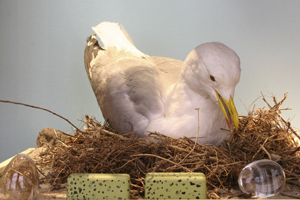Baerends' eggs

How does a gull recognise its own eggs? Is it the shape? The pattern of dots? And if you place an egg outside the nest, what does it take to get the bird to manoeuvre it back and hatch it?
Biologist Gerard Pieter Baerends was fascinated by the behaviour of animals, especially gulls. He researched it extensively in the fifties and sixties of the last century and made some major discoveries.
Baerends, who was a pupil of Nobel Prize winner Niko Tinbergen from Leiden, decorated approximately two hundred fake eggs with different patterns. He also made glass eggs, square eggs, giant eggs, etc. Next, he went to a gull colony on the Dutch island of Terschelling with his students and replaced real eggs with fake ones. Then he observed how the birds reacted.
The results? The animals don’t care about the dots all that much. The colour doesn’t interest them either. It’s the shape and size of the egg that gets them going. Put a flat egg beside the nest and no bird will try to get it back in. Square specimens aren’t popular either. However, when the corners are rounded off and the supposed egg is big, the gull will do anything in its power to retrieve it. Size does matter.
This was not a common research method. Behavioural studies usually were done in the laboratory. Field research, studying animals in their natural habitat without disturbing their natural behaviour, was entirely new. The fact that Baerends went out accompanied by his students and made omelettes out of the eggs he found, was also completely unheard of.

